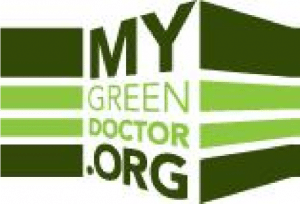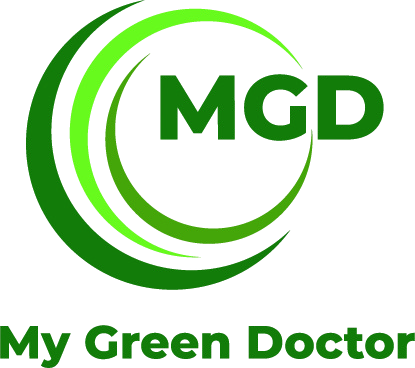Our Health & Today’s Changing Climate: What We in Healthcare Can Do
Laurie Kirkland, University of North Florida, MPH candidate, February 2016
The Earth’s climate is changing and already our health is threatened. This article offers a basic explanation of climate change, how climate threatens our health, and what those of us who work in healthcare can do about it.
Carbon dioxide and other greenhouse gases have increased in the atmosphere over the past 150 years to levels of these gases not seen in 650,000 years. These gases trap the sun’s heat to gradually warm the planet and leading to extreme weather patterns.
The burning of fossil fuels such as coal, natural gas and petroleum are the principal human causes of greenhouse gas accumulation. Other important causes are forest fires, deforestation, methane from domestic animals, and pollution by industrial fluorocarbon chemicals. The United Nations, US Environmental Protections Agency, the five recent U.S. Presidents, and the consensus of the world’s climate scientists have all declared that human activity is responsible primarily for today’s climate change.
We are seeing signs of the Earth warming almost everywhere. Climate change is responsible for excessive amounts of rainfall, rising sea levels, heat waves, droughts, and extreme weather events. Storms are increasing in strength, ice glaciers are melting, and summers are becoming excessively hot.
Some health effects of climate change are:
- Increased rates of asthma, particularly for children & elderly adults
- Cardiovascular deaths during heat waves
- Cancer, especially melanoma
- Mental health effects caused by stress
- Weather-related injuries: hurricanes, tornadoes, flooding, & fires
- Vector-borne and zoonotic diseases, such as malaria, Dengue, Zika virus, Lyme disease, West Nile & others
- Malnutrition and famine due to prolonged drought and sea level rise, now occurring across Africa & in parts of Asia
- Health risks to migrants who are forced to relocate due to rising sea levels & other disasters caused by climate change
What We Can Do
Those of us working in healthcare can help slow climate change and to help protect our patients from the effects of climate change. We have a responsibility to do this because we care about our patients; our influence can be significant because we are role models in our communities.
As a first step, you can become part of the solution by acknowledging that climate change is real and by encouraging others to do so as well. The more we discuss this openly, the better prepared our societies will be to respond to this threat.
Second, make choices in your life and in your office that help prevent climate change. Here are a few options that will help save your family money and help the environment:
Appliances:
- Purchase only home and office appliances with the Energy Star rating from the United States Department of Energy, or a rating system offered in your country. Look for these ratings when you shop for large or small kitchen appliances, clothes washers and dryers, televisions and telephones, computers and data storage devices, ceiling fans, light bulbs, vacuums, and pool pumps.
Home heating & air conditioning:
- Change your home air filters and office according to the manufacturer’s recommendations, use programmable thermostats, and perform regular maintenance on these machines. A programmable thermostat lets you set the temperature and to change the temperature depending on the time of the day. You can program your thermostat to cool or heat your home less when you are away from home. This saves energy, which is good for the planet and lowers your costs. You can purchase a programmable thermostat at a hardware store or home improvement store. Be sure machines are properly maintained so that they function at peak efficiency.
- Buy Energy Star-rated machines
Reduce/Reuse/Recycle
My Green Doctor’s seven workbooks offer dozens of ways to reduce your family’s and office’s use of resources, and how to reuse and recycle.
- “Reduce” your use of chemicals, paper products, office supplies, & medical supplies. Consider carefully before buying. Try to avoid buying environmentally- costly plastic and Styrofoam products.
- “Reduce” your water use, both at home and for landscaping. My Green Doctor offers dozens of ways to save water.
- “Reduce” home and office use of electricity by turning lights off when leaving a room, installing motion detectors to turn the lights off (this is almost always cost-effective), and turning off electrical items or putting them in “sleep mode” when not in use.
- “Reuse” sheets of paper when possible; avoid buying “disposable supplies for your home and office.
- “Recycle” whenever possible. If recycling is not available for commercial buildings in your city, you can still recycle by taking home your office recyclables. Begin composting your food and garden wastes if this is available in your community. Ask your city leaders to require recycling and composting by offices.
Other tips to consider:
- Consider climate change in your personal transportation choices. Why not walk, bicycle or carpool whenever you can? Choose an energy efficient or smaller vehicle as your next purchase. Why not a hybrid or an electric car?
- “Go meatless” twice a week.
- Use solar panels for the hot water needs of your home and office.
- Plant trees and vegetation.
My Green Doctor is a free website for health care providers and for patients that offers more than 140 steps that you can take to save money and to reduce greenhouse gases. Register today at www.mygreendoctor.org




